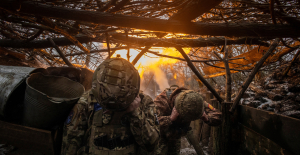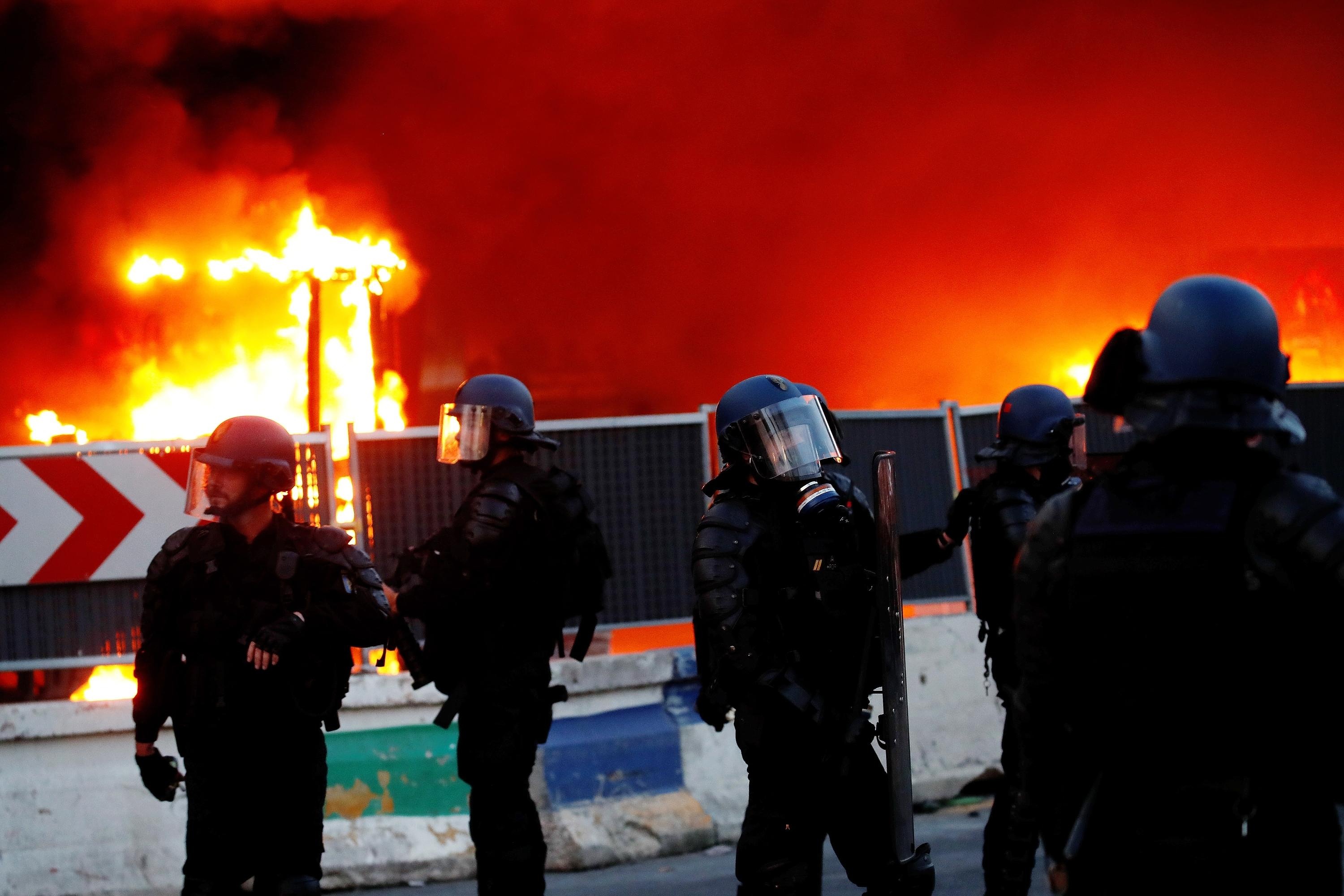"Citizens, prepare to evacuate and allow children and the elderly to evacuate first." It was by this laconic alert, sent to their mobile phones at 6:41 a.m., that the inhabitants of Seoul were pulled out of bed this Wednesday, May 31. A message sent by the authorities of the South Korean capital after the (failed) launch of a satellite by North Korea, which panicked the megalopolis both by its alarmist tone and by its absence of clear instructions.
This alert "did not say where [to evacuate], why or what to expect," thunders Emma, a foreign exchange student, on Twitter. On the same social network, another resident of the capital wonders: "There are 25 million people in Seoul, where are we evacuating?" The false alarm was quickly defused by local authorities, but it raises a question that many Koreans never really asked themselves: what to do in the event of an attack?
The two Koreas are, officially, still at war: they have never signed a peace treaty. If the situation has stabilized, North Korea regularly fires missiles to show its muscles. With this threatening neighbour, the city of Seoul, close to the border, has built a network of air-raid shelters. While many understood that "evacuating" meant leaving the city, it was more likely that the authorities would recommend at that time to take refuge in these places protected from bombs and missiles.
Metro stations, underground shopping malls, car parks... In the capital, more than 3,000 places have been identified as being able to serve as refuge in the event of a bombardment. According to Reuters, this represents an area of nearly 24km2 accessible in the event of an attack. These places are identified by red signs indicating in Korean and English “refuge”. A government platform and an official application allow you to locate the nearest shelter.
But accustomed to the North Korean threat, which hasn't resulted in a real attack since the 1953 armistice, most Seoul residents don't even pay attention to those signs anymore. Nearly three quarters of them did not know where the nearest shelter was, according to a 2014 survey reported by the Korean daily Chosun Ilbo.
Despite the official instructions available on government sites and the existence of these shelters, "people are not really aware" of the procedure to follow, agrees Pascal Dayez-Burgeon, specialist in Korea. In Seoul, despite the proximity to the border, no one has the feeling of living under threat, abounds the researcher: "It's been 50 years that the North says every day that it will destroy the South and its capital, more no one believes it."
The embassies have an evacuation plan for their nationals. “For France, there is a meeting every month which reminds us of the places where we should gather according to the district”, explains Pascal Dayez-Burgeon, acknowledging that “in the event of a real crisis, everyone will try to flee, there will be traffic jams, and it will be a mess".

 What is chloropicrin, the chemical agent that Washington accuses Moscow of using in Ukraine?
What is chloropicrin, the chemical agent that Washington accuses Moscow of using in Ukraine? Poland, big winner of European enlargement
Poland, big winner of European enlargement In Israel, step-by-step negotiations for a ceasefire in the Gaza Strip
In Israel, step-by-step negotiations for a ceasefire in the Gaza Strip BBVA ADRs fall almost 2% on Wall Street
BBVA ADRs fall almost 2% on Wall Street Children born thanks to PMA do not have more cancers than others
Children born thanks to PMA do not have more cancers than others Breast cancer: less than one in two French women follow screening recommendations
Breast cancer: less than one in two French women follow screening recommendations “Dazzling” symptoms, 5,000 deaths per year, non-existent vaccine... What is Lassa fever, a case of which has been identified in Île-de-France?
“Dazzling” symptoms, 5,000 deaths per year, non-existent vaccine... What is Lassa fever, a case of which has been identified in Île-de-France? Sánchez cancels his agenda and considers resigning: "I need to stop and reflect"
Sánchez cancels his agenda and considers resigning: "I need to stop and reflect" “Amazon product tester”: the gendarmerie warns of this new kind of scam
“Amazon product tester”: the gendarmerie warns of this new kind of scam “Unjustified allegations”, “promotion of illicit products”… Half of the influencers controlled in 2023 caught by fraud repression
“Unjustified allegations”, “promotion of illicit products”… Half of the influencers controlled in 2023 caught by fraud repression Extension of the RER E: Gabriel Attal welcomes a “popular” ecology project
Extension of the RER E: Gabriel Attal welcomes a “popular” ecology project WeWork will close 8 of its 20 shared offices in France
WeWork will close 8 of its 20 shared offices in France “We were robbed of this dignity”: Paul Auster’s wife denounces the betrayal of a family friend
“We were robbed of this dignity”: Paul Auster’s wife denounces the betrayal of a family friend A masterclass for parents to fill in their gaps before Taylor Swift concerts
A masterclass for parents to fill in their gaps before Taylor Swift concerts Jean Reno publishes his first novel Emma on May 16
Jean Reno publishes his first novel Emma on May 16 Cannes Film Festival: Meryl Streep awarded an honorary Palme d’Or
Cannes Film Festival: Meryl Streep awarded an honorary Palme d’Or Omoda 7, another Chinese car that could be manufactured in Spain
Omoda 7, another Chinese car that could be manufactured in Spain BYD chooses CA Auto Bank as financial partner in Spain
BYD chooses CA Auto Bank as financial partner in Spain Tesla and Baidu sign key agreement to boost development of autonomous driving
Tesla and Baidu sign key agreement to boost development of autonomous driving Skoda Kodiaq 2024: a 'beast' plug-in hybrid SUV
Skoda Kodiaq 2024: a 'beast' plug-in hybrid SUV The home mortgage firm rises 3.8% in February and the average interest moderates to 3.33%
The home mortgage firm rises 3.8% in February and the average interest moderates to 3.33% This is how housing prices have changed in Spain in the last decade
This is how housing prices have changed in Spain in the last decade The home mortgage firm drops 10% in January and interest soars to 3.46%
The home mortgage firm drops 10% in January and interest soars to 3.46% The jewel of the Rocío de Nagüeles urbanization: a dream villa in Marbella
The jewel of the Rocío de Nagüeles urbanization: a dream villa in Marbella Europeans: a senior official on the National Rally list
Europeans: a senior official on the National Rally list Blockade of Sciences Po: the right denounces a “drift”, the government charges the rebels
Blockade of Sciences Po: the right denounces a “drift”, the government charges the rebels Even on a mission for NATO, the Charles-de-Gaulle remains under French control, Lecornu responds to Mélenchon
Even on a mission for NATO, the Charles-de-Gaulle remains under French control, Lecornu responds to Mélenchon “Deadly Europe”, “economic decline”, immigration… What to remember from Emmanuel Macron’s speech at the Sorbonne
“Deadly Europe”, “economic decline”, immigration… What to remember from Emmanuel Macron’s speech at the Sorbonne These French cities that will boycott the World Cup in Qatar
These French cities that will boycott the World Cup in Qatar Champions Cup: Toulouse with Flament and Kinghorn against Harlequins, Ramos replacing
Champions Cup: Toulouse with Flament and Kinghorn against Harlequins, Ramos replacing Tennis: still injured in the arm, Alcaraz withdraws from the Masters 1000 in Rome
Tennis: still injured in the arm, Alcaraz withdraws from the Masters 1000 in Rome Sailing: “Like a house that threatens to collapse”, Clarisse Crémer exhausted and in tears aboard her damaged boat
Sailing: “Like a house that threatens to collapse”, Clarisse Crémer exhausted and in tears aboard her damaged boat NBA: Patrick Beverley loses his temper and throws balls at Pacers fans
NBA: Patrick Beverley loses his temper and throws balls at Pacers fans


















